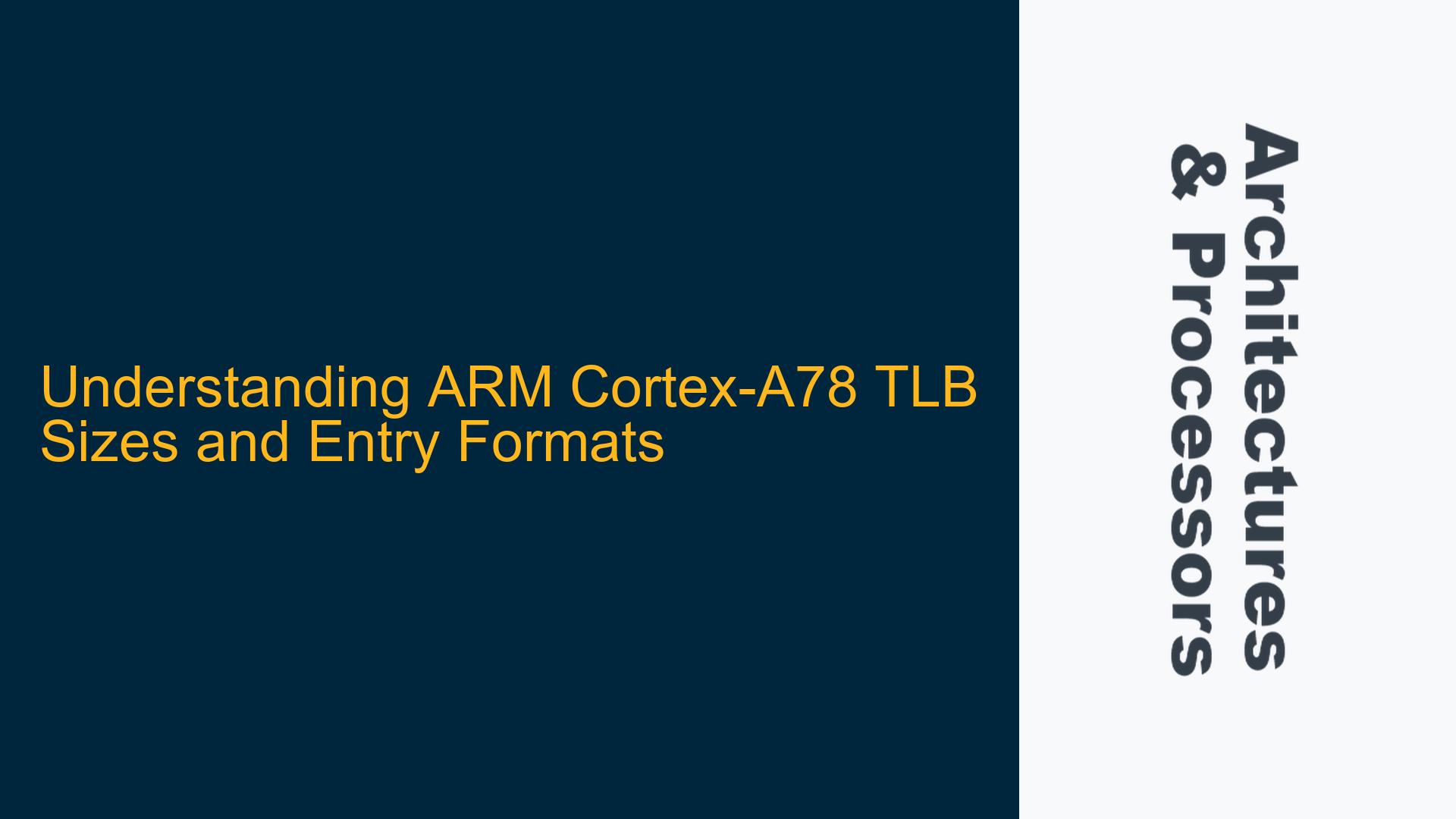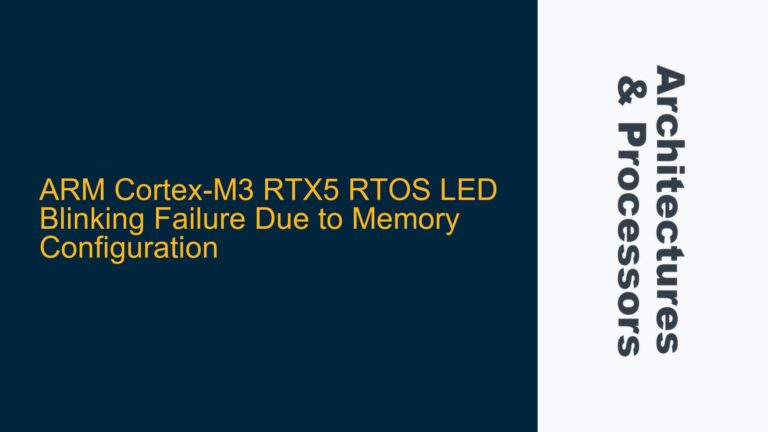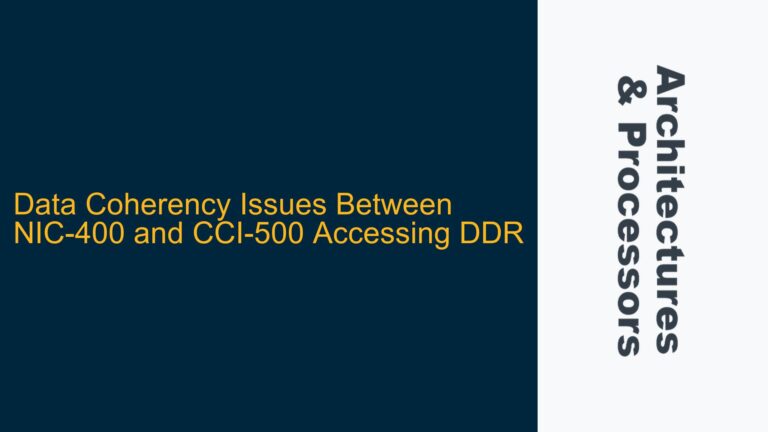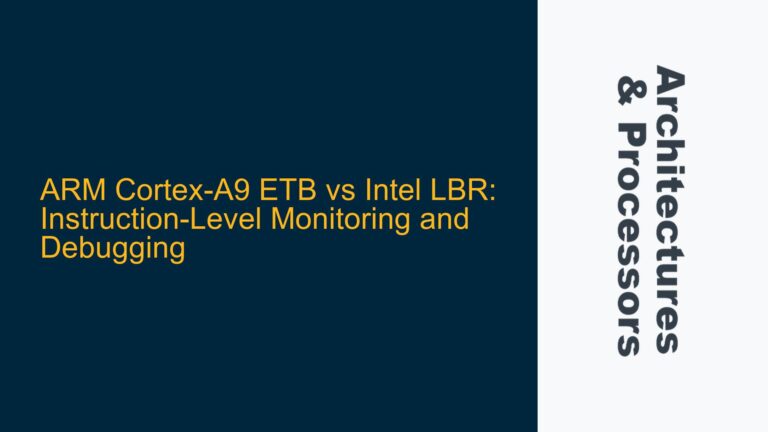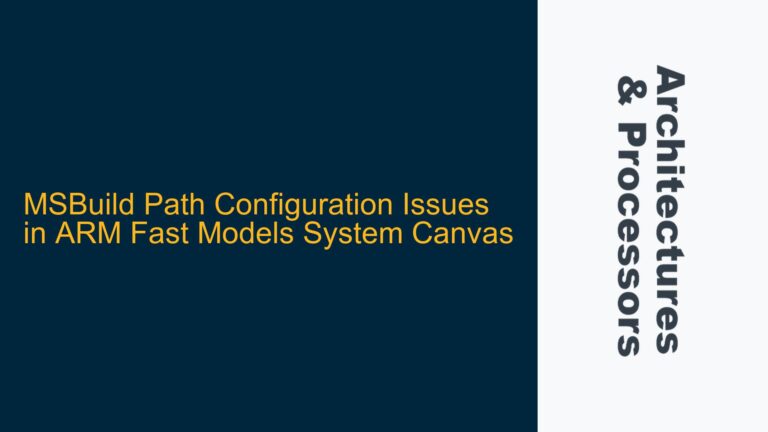ARM Cortex-A78 TLB Structure and Entry Size Misconceptions
The Translation Lookaside Buffer (TLB) is a critical component of the Memory Management Unit (MMU) in modern processors, including the ARM Cortex-A78. The TLB acts as a cache for page table entries, reducing the latency of virtual-to-physical address translation. However, there is often confusion regarding the size and structure of TLB entries, particularly when comparing them to cache line sizes. In the case of the ARM Cortex-A78, the TLB is divided into two levels: the Level 1 (L1) TLB and the Level 2 (L2) TLB. Each level serves a distinct purpose and has its own characteristics.
The L1 TLB is typically smaller and faster, designed to handle the most frequently accessed translations. It is further divided into separate Instruction TLB (ITLB) and Data TLB (DTLB) structures to optimize instruction fetches and data accesses independently. The L2 TLB, on the other hand, is larger but slower, acting as a secondary cache for translations that miss in the L1 TLB. The sizes of these TLBs can vary depending on the specific implementation, but they are generally documented in the Technical Reference Manual (TRM) for the processor.
A common misconception is that TLB entries are directly comparable to cache line sizes. While both are measured in bytes, their purposes and structures are fundamentally different. Cache lines are fixed-size blocks of memory used to store data or instructions, whereas TLB entries contain metadata required for address translation, such as virtual page numbers, physical page numbers, and permission bits. The size of a TLB entry is determined by the format used by the MMU, which can vary between processor architectures and even between different implementations of the same architecture.
In the ARM Cortex-A78, the L1 TLB entry format is detailed in Section A6.6.2 of the TRM. This section provides the encoding for L1 data cache tags, L1 data cache data, and L1 TLB data. Understanding this encoding is crucial for debugging MMU-related issues, as it reveals how the processor stores and retrieves translation information. The L1 TLB entry format includes fields for the virtual address, physical address, memory attributes, and access permissions. These fields are packed into a fixed-size entry, which is typically smaller than a cache line but optimized for fast lookup and retrieval.
The L2 TLB, being larger, may use a different entry format to accommodate additional information or to support more complex translation schemes. However, the exact format and size of L2 TLB entries are often less critical for software developers, as the L2 TLB is managed transparently by the hardware. The primary concern for software is ensuring that the TLB is properly invalidated or flushed when necessary, such as during context switches or changes to the page tables.
Misalignment Between TLB Entry Size and Cache Line Size
One of the key points of confusion in the discussion is the relationship between TLB entry size and cache line size. While both are measured in bytes, they serve entirely different purposes and are structured differently. Cache lines are designed to store data or instructions in fixed-size blocks, typically ranging from 32 to 128 bytes in modern processors. The size of a cache line is chosen to balance the trade-off between spatial locality (the likelihood that nearby memory locations will be accessed soon) and the overhead of transferring larger blocks of data.
In contrast, TLB entries are designed to store translation information, which includes the virtual page number, physical page number, and various control bits. The size of a TLB entry is determined by the number of bits required to represent these fields, which can vary depending on the address space size and the granularity of the page tables. For example, a processor with a 48-bit virtual address space and 4 KB pages would require at least 48 bits for the virtual page number and 36 bits for the physical page number (assuming a 40-bit physical address space). Additional bits are needed for memory attributes, access permissions, and other control information.
The ARM Cortex-A78, like many modern processors, uses a hierarchical page table structure, which allows for different page sizes (e.g., 4 KB, 16 KB, 64 KB, and 1 MB). This flexibility requires the TLB to support multiple page sizes, which can further complicate the entry format. The L1 TLB typically supports a limited number of page sizes, while the L2 TLB may support a broader range. The entry format must accommodate these variations, which can lead to differences in entry size between the L1 and L2 TLBs.
Another important consideration is the alignment of TLB entries with cache lines. While TLB entries are not stored in the same way as cache lines, they may still be affected by cache behavior. For example, when a TLB entry is evicted from the L1 TLB, it may be written back to the L2 TLB or to a dedicated TLB cache. This process can involve cache line transfers, which can impact performance if the TLB entry size is not aligned with the cache line size. Misalignment can lead to increased cache pollution, where unnecessary data is loaded into the cache, reducing its effectiveness.
To avoid these issues, the ARM Cortex-A78 uses a carefully designed TLB entry format that minimizes the impact of misalignment. The L1 TLB entry format is optimized for fast lookup and retrieval, with fields arranged to reduce the number of bits required for each entry. The L2 TLB entry format may be less optimized but is designed to handle a larger number of entries efficiently. Both formats are documented in the TRM, allowing software developers to understand how the TLB operates and how to optimize their code for TLB performance.
Debugging and Optimizing TLB Performance in ARM Cortex-A78
Debugging TLB-related issues in the ARM Cortex-A78 requires a deep understanding of the TLB structure and entry format. One common issue is TLB thrashing, where the TLB is constantly evicting and reloading entries due to a high rate of translation misses. This can occur when the working set of a program exceeds the capacity of the L1 TLB, forcing frequent accesses to the L2 TLB or the page tables. TLB thrashing can significantly degrade performance, as each TLB miss incurs a penalty in terms of additional memory accesses and latency.
To diagnose TLB thrashing, developers can use performance monitoring tools to track TLB miss rates and identify the sources of high miss rates. The ARM Cortex-A78 includes performance counters that can be configured to monitor TLB activity, providing insights into the behavior of the TLB under different workloads. By analyzing these counters, developers can identify patterns of TLB misses and determine whether they are caused by poor locality, large working sets, or inefficient page table structures.
Once the source of TLB thrashing has been identified, developers can take steps to optimize TLB performance. One approach is to reduce the working set size by reorganizing data structures or algorithms to improve locality. For example, using smaller page sizes can reduce the number of TLB entries required to cover a given address range, but this must be balanced against the overhead of managing more page tables. Another approach is to use large pages for frequently accessed regions of memory, reducing the number of TLB entries needed to cover those regions.
In some cases, software can directly manage the TLB by invalidating or flushing entries when necessary. This is particularly important in multi-threaded or multi-core environments, where changes to the page tables by one thread or core can affect the TLB state of another. The ARM Cortex-A78 provides instructions for TLB maintenance, such as the TLBI (TLB Invalidate) instructions, which allow software to invalidate specific TLB entries or entire sets of entries. Proper use of these instructions can prevent stale TLB entries from causing incorrect translations or security vulnerabilities.
Another consideration is the interaction between the TLB and the cache hierarchy. As mentioned earlier, TLB entries are not stored in the same way as cache lines, but they can still be affected by cache behavior. For example, if a TLB entry is evicted from the L1 TLB and written back to the L2 TLB, this process may involve cache line transfers. If the TLB entry size is not aligned with the cache line size, this can lead to increased cache pollution and reduced performance. To mitigate this, developers can ensure that TLB entries are aligned with cache lines, or they can use cache management instructions to control the behavior of the cache.
Finally, developers should be aware of the impact of TLB performance on overall system performance. While the TLB is a critical component of the memory hierarchy, it is just one part of a complex system that includes caches, memory controllers, and other components. Optimizing TLB performance must be done in the context of the entire system, taking into account the interactions between different components and the trade-offs involved in different optimization strategies. By understanding the TLB structure and entry format, and by using the tools and techniques available for debugging and optimization, developers can ensure that their applications run efficiently on the ARM Cortex-A78.
In conclusion, the ARM Cortex-A78 TLB is a sophisticated component that plays a vital role in virtual-to-physical address translation. Understanding its structure, entry format, and behavior is essential for debugging and optimizing performance. By addressing common misconceptions, such as the relationship between TLB entry size and cache line size, and by using the tools and techniques available for TLB management, developers can ensure that their applications make the most of the ARM Cortex-A78’s capabilities.
